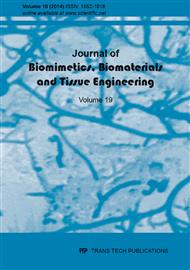p.1
p.13
p.25
p.35
p.43
p.65
p.77
p.87
Grasshopper Knee Joint – Inverse Kinematic Modeling and Simulation of Ionic Polymer Metal Composites (IPMC) Actuators
Abstract:
Biomimetic is the field of engineering in which biological structures and functions are analyzed and are used as the basis for the design and manufacturing of machines. Insects are the most populated creature and present everywhere in the world and can survive the most hostile environmental situations. IPMC is a smart material which has exhibited a significant bending and tip force after the application of a low voltage. It is light-weighted, flexible, easily actuated, multi-directional applicable and requires simple manufacturing.In this paper, five different contributions are made. Firstly, a two link grasshopper knee joint physical model is presented in which the actuation force required for moving the knee is provided by the IPMC material. This material constitutes one link of the linkage. Secondly, inverse kinematic model has been developed for the linkage. Thirdly, the system of equations is solved by proposing solutions to the known transcendental functions with unknown coefficients. Fourthly, wolfram mathematica is employed for the simulation of the model. Finally, angles, velocity and acceleration of the links are analyzed based on the simulation results. The simulation results show that the tibia is displaying a lag in time from the femur verifying that it is operated by the force provided by the femur (IPMC). Also, it verified the flexible nature of the IPMC material through multiple peaks and troughs in the graphs. The angles range of the tibia is found quite admirable and it is believed that the IPMC material can add a new horizon to the manufacturing of small biomimetic equipment and low force actuated manipulators.
Info:
Periodical:
Pages:
1-11
Citation:
Online since:
March 2014
Authors:
Price:
Сopyright:
© 2014 Trans Tech Publications Ltd. All Rights Reserved
Share:
Citation:



